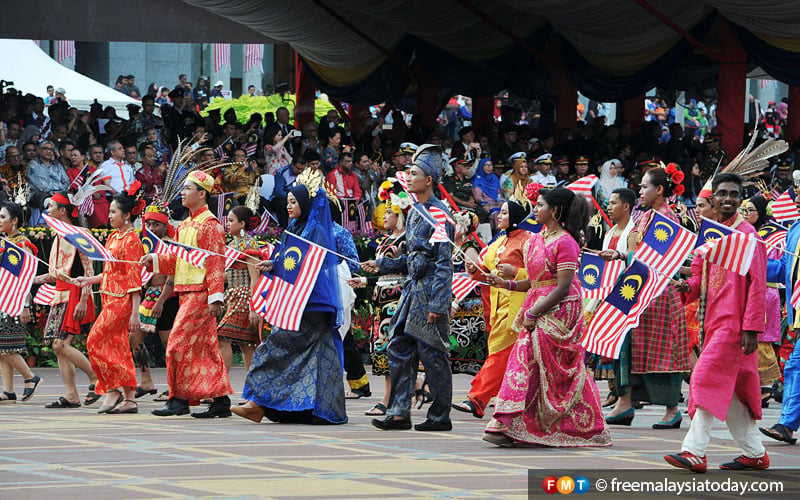
From Jonathan Wong
It’s okay to be irked by our neighbour Singapore. We’ve kicked them out and we’ve been condemning them ever since. We’ve been competing with them and losing to them for quite a while now.
We’ve been winning less and less year after year while they have been winning more. We have more than them, yet we possess less. They have less than us, yet they possess more. We’ve become more envious of them, year by year.
This structural socio-economic paradox cannot be eliminated in one year, five years or even a decade. It will take a huge paradigm shift and an entire generation of Malaysians, who wish to see the country put back on the right path and get the multiracial model approach right, by putting people of all communities first.
Just shy of almost 60 years ago, the entire world bore testament to the separation of Singapore from Malaysia into an independent and sovereign nation.
The once lowly fishing village devoid of natural resources has surmounted its weighty and heavy national problems: the dearth of good public housing, poor sanitation and stratospheric unemployment. Today, the backwater island nation has transformed itself into a glittering bastion of intergenerational harmony and multiracialism. In my book, it is the only country that has gotten the multiracial model right.
A picture book by Gretchen Liu titled: “Singapore: A Pictorial History 1819 – 2000” tells its interesting history.
On Sept 12, 1965, Lee Kuan Yew said these immortal words to a tiny nation that would be the shining beacon for all other multiracial nations: “I say to you: here we make the model multiracial society. This is not a country that belongs to any single community: it belongs to all of us. You helped build it; your fathers, your grandfathers helped build this. There was no naval base here, and it was your labour, your father’s labour that built that. My great-grandfather came here and built. Yes, he came here looking for his fortune, but he stayed – my grandfather was born here.”
We, Malaysia, were supposed to be that multiracial dream, that shining beacon to the world, in the words of our founding father, Tunku Abdul Rahman. Yet we fell short of that ideal, not by a miss, but by a mile. We failed, miserably.
Indeed, our dream was stolen. Not by our neighbours. Not by Thailand. Not by Singapore. Not by our people. Instead, it was stolen by those who dare cloak themselves in the mantle of political leadership and call themselves the leaders of our country.
Talking about how the Indian community was lifted up, the book says: “Singapore’s Indian community is diverse and complex. Despite being a minority in the cosmopolitan map of Singapore – a mere 7% of the total population – Indians have figured prominently in almost every field, be it politics or pedagogy, culture or commerce, scientific research or social work, law or, simply, the labour force. The nation’s second elected president, S Nathan, is a retired civil servant and former ambassador. He was sworn in on Sept 1, 1999. The formation of the Singaporean Indian Development Association (Sinda) in 1991 has generated a new level of communal solidarity.”
Fast forward to September 2023, Singapore has seen the swearing in of its third Indian-origin president, Tharman Shanmugaratnam.
What a stark contrast to the Malaysian Indian community – polarised, broken and fragmented and left behind in the dust by Malaysia’s New Economic Policy, mired in the manifold quandaries of poor representation in public and private sector employment, alcoholism, drug addiction, gangsterism, deaths in custody, and inadequate funding for Tamil vernacular schools.
Even back then, Singapore had gotten the multiracial model right: In 1991, we could see the extraordinary collaboration between the Indian community and the government in the formation of Sinda.
With a governance structure and an executive committee, Sinda discovered the root cause of Indian underperformance: divisions between the labour class and the professional and business classes. Here, Sinda masterfully deployed its two wings, the education wing and welfare wing to address the underachievement issue. Within 20 years, the academic achievement of Singaporean Indian students was elevated to be on par with Singaporean Chinese students.
Today, Sinda has an annual revenue of close to S$33 million and has touched almost 25,000 Indian individuals. Said differently, Sinda is a tremendous success story: it elevated the educational attainment of Singaporean Indians and put their problems to bed, constructing a well-educated, resilient and confident community on par with other races in Singapore.
Compare that with the Malaysian situation. In Malaysia, you have discriminatory policies that disproportionately accord rights and privileges to one ethnic group at the huge expense of other Malaysians.
Ultimately, the root cause of national disunity and disintegration has to be traced to official policies and practices of discrimination staunchly favouring a specific ethnic group of Malaysians while strongly disfavouring others.
Malaysia used to be at the crossroads with a premium on leadership and good governance. And here lies the tangible difference between Malaysia and its bittersweet neighbour: by deploying an equity-based approach in development policy – using a needs-based rather than a race-based strategy – Singapore has more than effectively addressed socio-economic problems within its Singaporean Indian community, it has uplifted the entire Singaporean Indian community.
Perhaps under a more reasonable, open-minded and enlightened framework which addresses the concerns of all the poor and disadvantaged of all ethnic groups based on the cornerstone of need, access and merit, Malaysia can get the multiracial model right and finally get to be back on par with its bittersweet neighbour in terms of economic income, global competitiveness, social cohesion and multiracial harmony. - FMT
Jonathan Wong is a writer and an FMT reader.
The views expressed are those of the writer and do not necessarily reflect those of MMKtT.



No comments:
Post a Comment
Note: Only a member of this blog may post a comment.